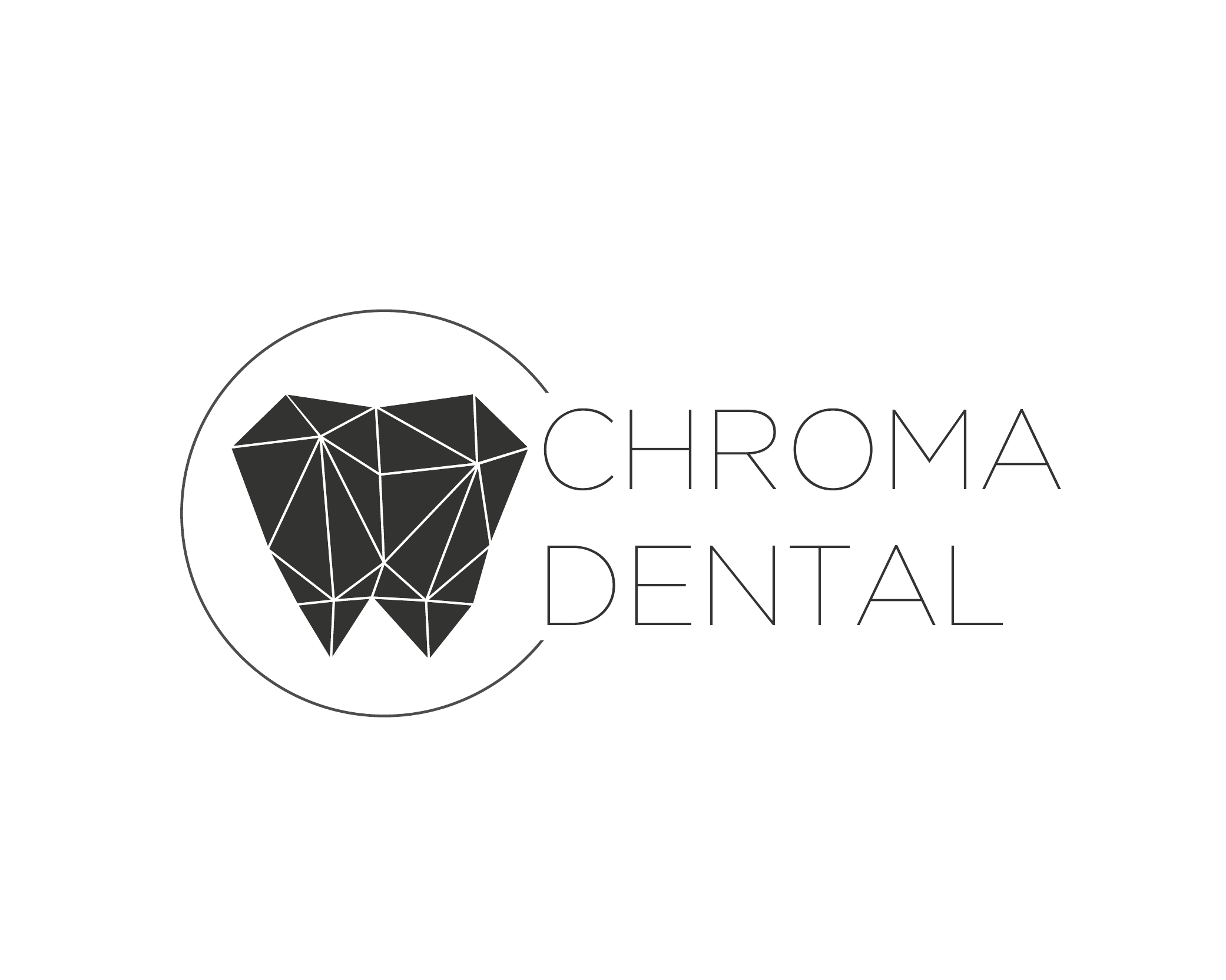At the office of Chroma Dental, we invest in advanced diagnostic tools so clinicians can see more, plan better, and treat with greater confidence. One of the most powerful technologies in our diagnostic toolkit is CBCT — cone-beam computed tomography — which produces three-dimensional images of the teeth, jaws, and surrounding structures in a single, rapid scan.
CBCT gives a level of spatial detail that ordinary two-dimensional X-rays cannot match. That extra information helps our team make precise clinical decisions, reduce guesswork, and tailor treatment plans to each patient’s unique anatomy while maintaining a focus on safety and comfort.
Traditional X-rays compress complex anatomy into a flat image, which can hide important details. CBCT preserves depth and spatial relationships, allowing clinicians to evaluate bone height and width, tooth root orientation, nerve pathways, and sinus anatomy simultaneously. For many diagnoses, this clarity can mean the difference between conservative care and a more involved surgical approach.
When evaluating a problem area, a 3D view helps the team understand how issues relate to neighboring structures. For example, a lesion near a nerve canal or an impacted tooth with an unusual root shape becomes much easier to assess in three dimensions, which reduces uncertainty and supports safer treatment planning.
Because CBCT data is volumetric, it can be reformatted into cross-sectional slices or rendered into a 3D model. These different views are useful for communication with patients and with other specialists, making treatment options more transparent and coordinated.
Successful implant placement depends on accurate assessment of bone volume and the location of essential anatomy. CBCT scans provide detailed measurements of bone height, width, and density so implant size and position can be planned precisely before a single incision is made. This preoperative insight improves predictability and reduces intraoperative surprises.
Modern workflows combine CBCT with digital planning tools to simulate implant position, estimate prosthetic outcomes, and design surgical guides. Those guides translate the virtual plan into the operatory with high fidelity, helping to preserve vital structures and optimize aesthetic and functional results.
For complex extractions, bone grafting, or corrective jaw procedures, CBCT helps determine the safest surgical approach and timing. The ability to visualize adjacent teeth, sinus cavities, and nerve courses supports conservative tissue handling and a more controlled surgical experience.
CBCT excels at revealing conditions that can be missed on conventional films. Small fractures, accessory root canals, localized bone defects, and certain periapical pathologies become much easier to identify with three-dimensional imaging. Early detection leads to more targeted treatments and helps avoid unnecessary procedures.
Temporomandibular joint (TMJ) assessment, impacted teeth evaluation, and analysis of complex root anatomy all benefit from the clarity CBCT provides. In cases where airway concerns or sleep-disordered breathing are suspected, CBCT can offer a useful anatomical snapshot to inform further evaluation and multidisciplinary referral when appropriate.
Because CBCT offers selectable fields of view, the scan can be limited to the area of interest to minimize exposure while still capturing the diagnostic detail required. This targeted approach enhances safety without sacrificing clinical value.
Contemporary CBCT units are designed for speed and patient comfort. Typical scans take only a matter of seconds, require minimal positioning, and are performed while the patient remains seated or standing. The open design and short scan times reduce discomfort and make the process accessible to a wide range of patients.
Radiation safety is an important consideration for any imaging modality. Dental CBCT devices emit significantly lower radiation than conventional medical CT scans, and the team follows established principles to use the smallest field of view and lowest exposure settings that still achieve diagnostic quality. Scans are ordered only when the additional information will directly affect clinical care.
Trained staff handle patient positioning and image acquisition to ensure consistent results and to limit repeat exposures. Images are reviewed carefully so that each scan contributes maximum diagnostic benefit to the treatment plan.
Because the information from CBCT can reduce the need for exploratory procedures, many patients experience fewer follow-up visits and more focused care — a practical advantage that complements the technology’s diagnostic strengths.
CBCT is most valuable when it complements other diagnostic tools rather than replacing them. We routinely combine 3D imaging with clinical exams, intraoral scans, and high-resolution photography to build a complete picture of oral health and cosmetic goals. This integrated approach supports restorative, orthodontic, and surgical planning in a coordinated way.
Digital models derived from CBCT data can be shared with dental laboratories and specialty providers to streamline collaboration. Whether the case involves restorative reconstruction, prosthetic planning, or complex surgical intervention, the ability to convey accurate anatomic information among the care team improves efficiency and outcomes.
Over the course of treatment, CBCT can also serve as an objective reference for monitoring healing and evaluating the long-term stability of restorations or implants. When repeat imaging is clinically justified, scans are performed with attention to minimizing exposure and maximizing diagnostic benefit.
By embedding CBCT into a broader digital workflow, providers deliver more predictable, personalized care — and patients receive treatment plans that are both evidence-based and tailored to their anatomy and goals.
In summary, cone-beam computed tomography is a powerful diagnostic tool that adds clarity, precision, and confidence to modern dental care. When used thoughtfully and selectively, CBCT enhances diagnosis, guides safer surgery, and supports coordinated treatment planning. If you’d like to learn more about how CBCT is used in our practice or whether it may be appropriate for your care, please contact us for more information.
